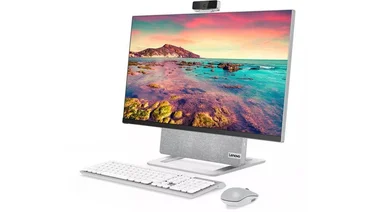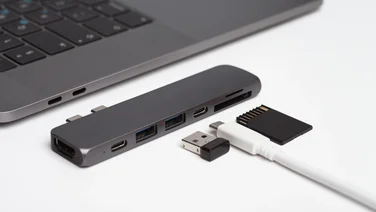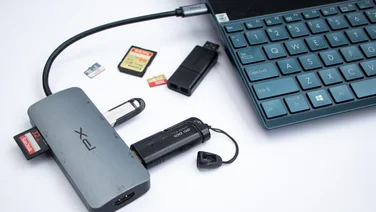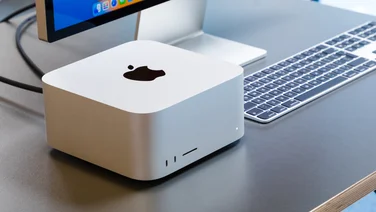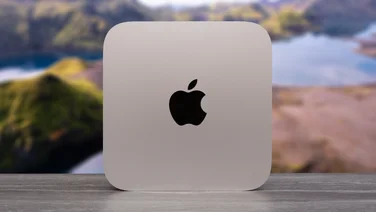To help us provide you with free impartial advice, we may earn a commission if you buy through links on our site. Learn more







- More compact than the regular Pi
- Super cheap
- Wi-Fi and Bluetooth included
- Limited physical connectivity
There’s a new Raspberry Pi on the block but if you were hoping to run heavier, more demanding apps than before, you’re in for a disappointment.
The new hardware is an update to the old Raspberry Pi Model A+ and, as with its predecessor, the focus is on keeping the size and price down to a bare minimum, rather than boosting performance.
That doesn’t mean the new Pi is underpowered. In fact, it has the same processor as the flagship Raspberry Pi 3 Model B+.
The big difference is a more limited set of physical connectors, leaving us with a dinky computer that’s perhaps less convenient for desktop use but ideal as a minimal home server or a control board for hobbyist projects.
READ NEXT: The best mini PCs for any budget
Raspberry Pi 3 Model A+ review: Price and competition
The new Model A+ launches at $25 – the same price as the old one – so you can expect to pay around £25 for it in the UK. That’s only a little less than the Raspberry Pi 3 Model B+, so if you’re looking for a general-purpose tinkering platform, the full-fat option is the better alternative.
If you’re after something even more lightweight, you could also consider the tiny Raspberry Pi Zero WH, which costs just £18 with built-in Wi-Fi, or the BBC micro:bit, which starts at £13.50 for the bare board.
And, if you have more ambitious ideas, there are plenty of more powerful boards out there, such as the Asus Tinker Board and the BeagleBoard X15. These aren’t really competing in the same market as the Raspberry Pi, though, with the aforementioned products costing £60 and £210 respectively.







Raspberry Pi 3 Model A+ review: Features and design
It’s a long time since the original Model A+ was introduced – just over four years to be precise – but the Raspberry Pi Foundation has kept the new model’s physical format exactly the same as the old one, with a 65 x 56mm footprint that’s around 25% smaller than a full-sized Pi.
That means existing Model A+ accessories and mountings will continue to work, and the board retains the standard 40-pin GPIO header, so it’s fully compatible with regular Raspberry Pi HATs and other accessories.
Perhaps less encouraging is the fact that the physical limitations of the old Model A+ have been faithfully maintained as well. While the mainstream Raspberry Pi 3 Model B gets four USB Type-A ports, the Model A+ sports just one, along with the familiar micro-USB power socket. Conveniently, there’s a full-sized HDMI socket and a 3.5mm audio jack which also carries composite analogue video – but no onboard Ethernet.







There is good news, though. Unlike the original Model A+, the new board comes with built-in Bluetooth 4.2 and dual-band 802.11ac Wi-Fi. This means you can easily hook up a wireless keyboard and mouse, and connect the Pi to a fast wireless network, without even touching that single USB socket. Ports? Who needs ‘em?
Raspberry Pi 3 Model A+ review: Performance
As I’ve mentioned, the Model A+ uses the same quad-core Broadcom A53 processor as the Raspberry Pi 3 Model B+, with the same 1.4GHz clock speed. It’s no surprise therefore that performance is very similar. Indeed, in the Hardinfo synthetic benchmarks there was really nothing to choose between the two boards:

It wouldn’t be quite right to say that performance is identical, however. The A+ has only 512MB of RAM versus the 1GB of the standard Pi, and this is likely to have an impact on some applications. Our selection of browser benchmarks illustrate that point: web graphics were equally smooth on both systems, but the JavaScript-heavy JetStream test was held back a little on the A+:

Still, while the gap is definitely there, it’s not huge. It’s safe to say that if you want to open dozens of browser tabs then things will get choppy on the A+ sooner than they would on the standard Pi. But in regular apps like LibreOffice – and your own programs – we very much doubt you’ll notice any performance difference at all.
As with the Model B+, the chipset also includes a built-in H.264 decoder and encoder, capable of supporting 1080p media at 30fps. Cinephiles won’t be wowed but, hey, it’s more than you’re entitled to demand from a board of this size and price.
Raspberry Pi 3 Model A+ review: Verdict
The Model A+ was never the star of the Pi family. The very limited connectivity of the old design made it difficult to recommend, which is perhaps why it’s been left to stagnate for so long.
However, the addition of Bluetooth and Wi-Fi transforms it into something vastly more versatile; something that can perfectly well replace a full-sized Raspberry Pi in almost any role that doesn’t require a physical Ethernet connection or multiple USB accessories.
Indeed, this new iteration is so neat, so cheap and so capable that it all but demands to become the new standard for ultra-lightweight and hobbyist computing. At such a bargain price, it’s harder than ever to justify not owning one.
| Raspberry Pi 3 Model B+ specifications | |
|---|---|
| Processor | 1.4GHz Broadcom BCM2837B0 (Cortex-A53) |
| Dimensions | 85x56mm |
| RAM | 1GB LPDDR2 SDRAM |
| Power connector | Micro USB |
| Network ports | Gigabit Ethernet via USB; dedicated 10/100 Ethernet |
| Wireless | Bluetooth 4.2/LE; Dual-band 802.11ac Wi-Fi |
| Graphics outputs | HDMI, Composite (via 3.5mm AV port) |
| Audio outputs | 3.5mm headphone |
| USB ports | 4 x USB2 |
| Storage | microSD card slot |


